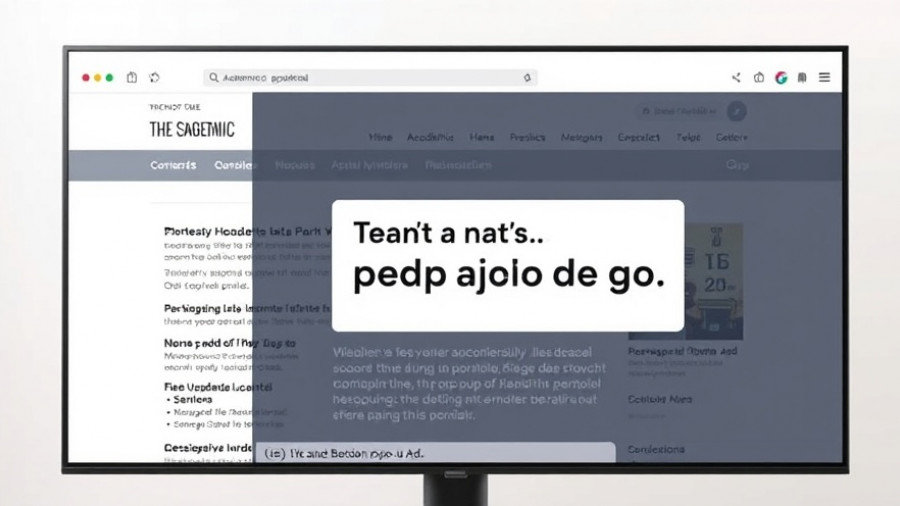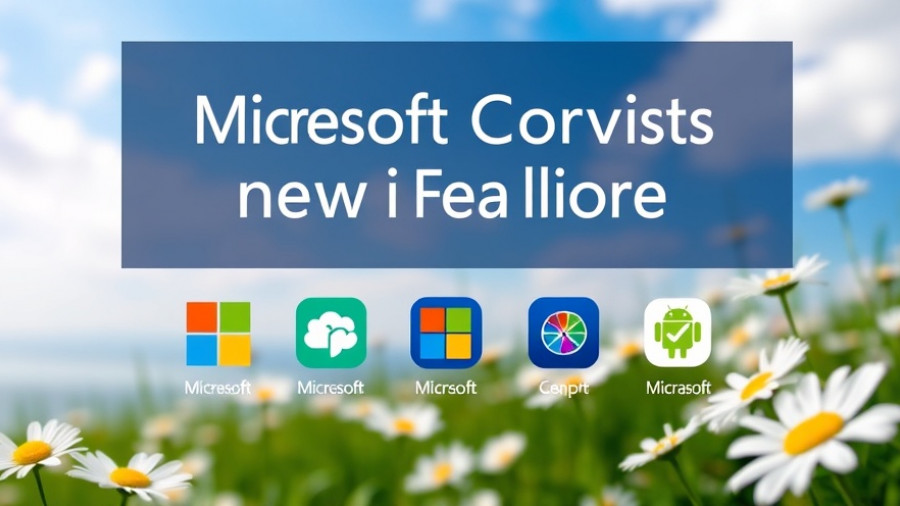
Understanding Microsoft's Copilot: A New AI Era
Microsoft is plunging deeper into the realm of artificial intelligence with its Copilot branding, a move that has sparked both excitement and confusion among users. As the company invests billions in AI technologies, led by critical investments in OpenAI, it is revamping how users interact with its productivity tools under the Copilot moniker.
The Mixed Messaging of Copilot Branding
Despite the potential of Copilot to transform productivity for millions, the current branding strategy has raised eyebrows. Jez Corden, Executive Editor at Windows Central, criticized the branding, arguing that renaming Microsoft Office to Microsoft 365 and then adding Copilot to the title introduces unnecessary complexity. This speaks to a wider issue: many users struggle to grasp how different applications under the Copilot umbrella interact and differ.
The Billion User Strategy
At a recent town hall, Microsoft CEO Satya Nadella addressed concerns over user confusion surrounding Copilot. His solution? Fostering mass adoption. Nadella stated, "The one way to make it less confusing is to have a billion users of each. Quite honestly, the best answer to a lot of the confusion is just daily usage, right?" This strategy, while bold, relies on significant user engagement to clarify the capabilities of Copilot across platforms.
Challenges Ahead: Security and Usability
As Microsoft doubles down on its marketing and product rollouts, challenges still loom large. Issues surrounding privacy and security threaten to overshadow the Copilot experience. The Teams lead has noted that while Copilot and ChatGPT share similarities, the former offers enhanced security features.
A Closer Look at Copilot's Functions
Currently, two main Copilot applications exist—one built from the ground up for consumer needs, and the other a mere rebranding of Microsoft Office. This dual approach complicates the user experience. Both applications provide a similar interface, which may lead users to overlook specific tools within the Microsoft suite.
Future Forecast: Will It Make the Grade?
Microsoft's history with virtual assistants complicates the outlook. Past products like Clippy and Cortana struggled with user adoption, often due to a lack of intuitive design and practical utility. However, the potential of Copilot to integrate seamlessly into everyday business practices could deliver the much-needed breakthrough.
The Value of User Engagement with AI Tools
Understanding how Copilot enhances productivity and simplifies daily tasks requires user familiarity with its functions. Evidence shows that dedicated daily use can significantly reduce confusion, making it essential for Microsoft to promote ongoing user engagement through effective tutorials and marketing efforts.
As Nadella notes, building a substantial user base will ultimately clarify Copilot's utility. As more individuals navigate the increasingly intricate AI landscape, they may discover that Copilot can offer significant advantages—especially in productivity software like Excel, Teams, and Word.
Conclusion: Navigating Microsoft's AI Landscape
For users and enterprises venturing into the world of AI-enhanced tools, understanding Microsoft's Copilot branding can be daunting. The journey involves adapting to new systems, learning functionalities, and embracing a fresh, interactive relationship with technology. Only time will tell if Microsoft's strategy pays off, but one thing is clear: the rewards of navigating this new territory could be transformative for productivity going forward.
 Add Row
Add Row  Add
Add 




Write A Comment